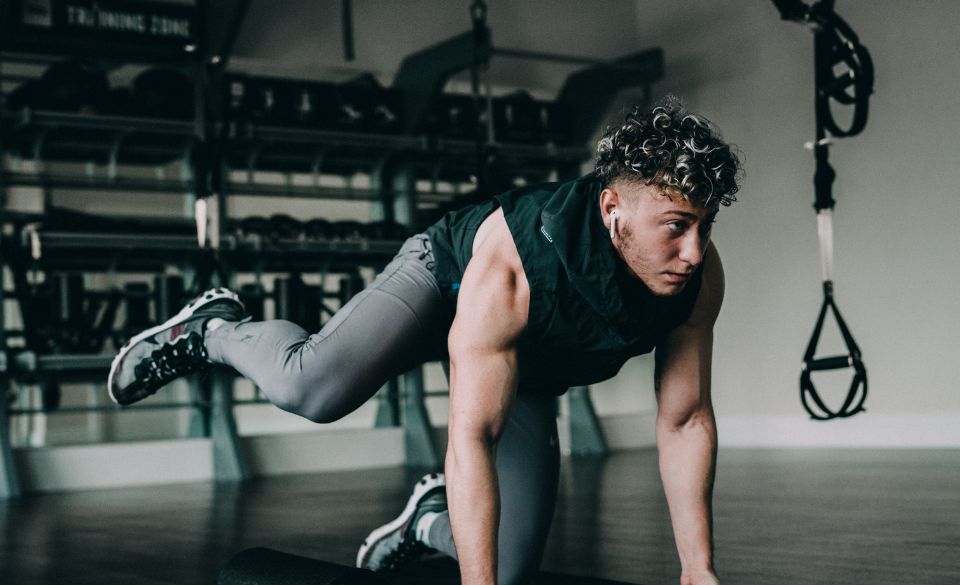
10 Components of Fitness: A complete Guide
Page Contents
In this article, we will delve into what we consider the ten fundamental components of fitness and explore their significance in your training regimen: endurance, stamina, strength, flexibility, power, speed, coordination, agility, balance, and accuracy.
10 Components of Fitness
Let’s provide a concise overview of each of these components:
1. Endurance: This relates to the capacity of the body’s systems to acquire, process, and transport oxygen.
2. Stamina: Stamina pertains to the body’s ability to process, deliver, store, and utilize energy effectively.
3. Strength: This component deals with the ability of a single muscular unit or a combination of muscular units to exert force.
4. Flexibility: Flexibility involves optimizing the range of motion at a specific joint.
5. Power: Power is the capability of a single muscular unit or a combination of muscular units to generate maximal force within a minimal time frame.
6. Speed: Speed pertains to the capacity to minimize the time cycle of repetitive movements.
7. Coordination: Coordination encompasses the skill to amalgamate multiple distinct movement patterns into a single, coherent movement.
8. Agility: Agility is the proficiency in reducing the transition time between different movement patterns.
9. Balance: Balance involves the aptitude to manage the placement of the body’s center of gravity concerning its support base.
10. Accuracy: Accuracy denotes the skill to control movement in a specific direction or at a given intensity.
The last four components – coordination, agility, balance, and accuracy – are closely associated with practice. Practice, conducted at lower heart rates and lighter loads, is aimed at enhancing your movement patterns, as these aspects largely involve neurological adaptations. In other words, they improve through the development of synapses from your brain and downward, facilitating a higher degree of proficiency in these movements.
On the other hand, the first six components – endurance, stamina, strength, flexibility, power, and speed – are more closely linked with training. Training, executed with heavier weights and elevated heart rates, primarily focuses on enhancing your engine (endurance) and muscular strength. It is instrumental in improving these physiological attributes.
Certain exercises may encompass elements of both practice and training. For example, running primarily pertains to training as it involves building your engine and muscle strength. Nevertheless, running also has a skill component. Inefficient running mechanics, such as heel striking and improper posture, can hinder progress. In such cases, skill practice becomes vital for refining efficiency and maximizing performance.
To achieve comprehensive fitness goals, a balanced approach to practice and training is essential, ensuring that you address the full spectrum of these ten fitness components effectively.
Olympic weightlifting stands out as a unique blend of exercises that demands a combination of practice and training. As Coach Bergeron aptly puts it, “Olympic weightlifting requires an incredible amount of strength and flexibility, as well as coordination, balance, and accuracy. It encompasses both ends of the fitness spectrum. This is why it’s crucial in Olympic lifts not to constantly lift at intensities of 90% and above. It’s essential to work on refining movement patterns, drilling in the bar path, and mastering the necessary skills and positions. These aspects can only be developed through practice with lighter loads” (Bergeron, 2019, 00:09:42).
The intriguing facet of the 10 components of fitness is that there’s always room for improvement for every individual. No one universally excels in all ten components.
Take, for instance, a golfer. Golf serves as an excellent sport for enhancing fitness. Nevertheless, it’s vital to diversify one’s exercise regimen to ensure comprehensive development across all 10 components. When we evaluate a golfer’s fitness based on these components, they might excel in only six of them: endurance, stamina, strength, power, coordination, and accuracy. This leaves ample opportunity for growth in the remaining components.
The concept of sport-specific training is currently en vogue. Using the golfer as an example once more, we wouldn’t incorporate exercises like wall balls into their training regimen. Why? Because they already demonstrate competence in coordination and accuracy. Focusing on these components would yield marginal improvements, which wouldn’t be the best utilization of their training time. Instead, we would concentrate on enhancing the four components where they display room for growth. Strengthening these facets of their fitness not only mitigates the risk of injury but also enhances their overall performance and fitness levels. Coach Bergeron offers this guidance: “Expose your weaknesses, identify them, discern the root cause. Is it an organic issue? Is it a neurological issue? If it’s organic, train it – work hard, lift heavy weights. If it’s neurological, practice it – employ low intensity. Embrace your weaknesses, practice relentlessly, and triumph over them” (Bergeron, 2019, 00:22:19).
For many, the allure of training lies in the immediate gratification it provides. We relish the endorphin rush, the ‘pump,’ and even the delightful soreness after a challenging workout. It’s inherently rewarding. On the contrary, practice is often regarded as mundane and uninspiring. It isn’t as enjoyable, nor is it typically an activity to be shared with friends. Therefore, practicing demands substantial discipline and does not yield the hormonal rewards that training provides. The frustration can be considerable because one might invest effort without tangible improvement, leading to a temptation to revert to training – the fun part where we excel. Coach Bergeron offers a metaphor: “Practice is akin to cultivating a bamboo forest… You plant the seeds and conscientiously tend to the soil, consistently watering it for five years without any visible growth. Nothing emerges from the ground. However, if you persist, trusting the process that you’re doing the right thing, then in 5 to 10 days, that bamboo forest will suddenly grow 60 feet (18 meters)” (Bergeron, 2019, 00:24:17).
We encourage individuals to appraise their fitness based on the 10 components, and we incorporate this holistic perspective when creating personalized exercise programs for our clients. This ensures that our clients experience genuine fitness enhancement. If you seek the guidance of a professional health and fitness coach for your fitness journey, please don’t hesitate to reach out to us. We hope you find this information valuable.
Frequently Asked Questions (FAQ)
Does physical fitness have 11 components?
Physical fitness typically consists of ten components, not eleven. These ten components encompass various aspects of one’s physical well-being.
The first component is cardiovascular endurance, which relates to the ability of the heart and lungs to supply oxygen to the body during sustained physical activity. This is crucial for activities that require stamina and prolonged effort.
Muscular strength, the second component, pertains to the maximum amount of force a muscle or muscle group can generate. It’s essential for tasks that require lifting or moving heavy objects.
Muscular endurance, the third component, involves the ability of a muscle or muscle group to perform repeated contractions over an extended period. This is important for activities that demand prolonged muscle effort.
Flexibility, the fourth component, addresses the range of motion around a joint or series of joints. It’s vital for maintaining suppleness and preventing injuries.
The fifth component, body composition, refers to the proportion of fat and non-fat mass in your body. It’s important for overall health and aesthetics.
Speed, the sixth component, focuses on the ability to move quickly from one point to another. This is essential for various sports and activities.
Power, the seventh component, involves the ability to exert maximum force in minimal time, which is important for activities that require explosive strength.
Agility, the eighth component, is about changing direction quickly and effectively, which is crucial for sports and activities that demand quick movements.
Balance, the ninth component, relates to the ability to maintain a stable position. Good balance is important for activities that involve coordination and stability.
The final component is coordination, which is the ability to integrate different movement patterns effectively. It’s vital for activities that require precise and synchronized movements.
While you might come across references to 11 components of fitness in certain contexts, these ten components provide a comprehensive framework for assessing and improving one’s physical fitness in a general context.
What are the 4 components of fitness?
The four main components of fitness are cardiovascular endurance, muscular strength, muscular endurance, and flexibility. These components represent different aspects of physical fitness.
What is a fitness component?
A fitness component is a specific attribute or characteristic of physical fitness that measures a particular aspect of an individual’s health and well-being. These components are essential for evaluating and improving a person’s overall fitness level and can vary in number, depending on the fitness model or system being used. Commonly recognized fitness components include cardiovascular endurance, muscular strength, muscular endurance, flexibility, and body composition.



